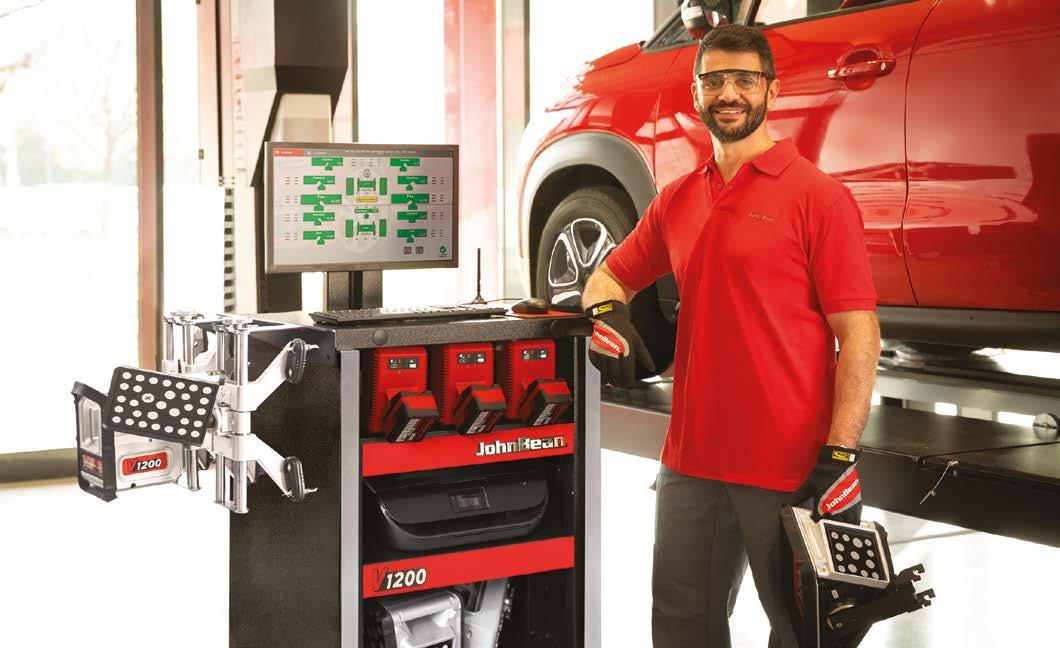
9 minute read
Tips for accurate suspension alignment
Poor working practices will result in inprecise alignment and a waste of technician time
Aligning best practice
Offering accurate suspension alignment enhances customer safety and value, while being a hugely valuable revenue stream but are you doing it right? Rob Marshall asks leading providers about best practice in this complex but fascinating field.
While motorcars have become increasingly sophisticated and sensitive to accurate geometry settings, so too have professional aligners. Optical tracking gauges appeared in workshops during the post-war period, to adjust toe only. Should the steering wheel be misaligned afterwards, the technician would simply unbolt and reposition it on the column splines. Obviously, those days are long gone. Later hang-on gauges use battery-powered filament bulbs, or lasers. Yet, the alignment procedure tended to be very time consuming. Additionally, camber and castor checks demanded extra hardware and even more technician time. Charge Coupled Device (CCD) 4-wheel geometry aligners appeared first during the 1980s, which use the same measuring methods but employ cameras, in addition to later refinements (such as Bluetooth connectivity) to enhance accuracy and time efficiency.
3D aligners introduce high definition cameras to establish the wheel hub's centre, without disturbing the suspension. Whether a static or portable system, they remain highly accurate and popular among workshops. As most garages possess either a CCD, or 3D system, the following best practice tips relate to those systems to help you work at your best.
1. Alignment turn plates must move freely. Their range of movement must not be restricted to a circular direction but also side-to-side and back-and-forth. This is especially important for accurate caster measurements. Conventional
MOT type turn-plates, which rotate only on a centre pin, are unsuited for wheel alignment.

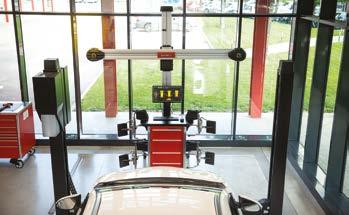
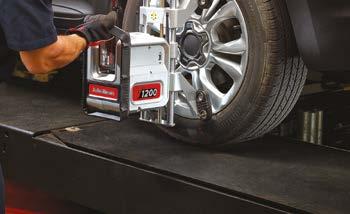
2. A rear sliding plate must be used, if you adjust 3. Annual calibration is crucial for CCD systems in rear toe/camber. It removes all stress from the particular, because the sensors can be knocked suspension and avoids flexing the tyre, which out of alignment easily in a typical workshop generates inaccurate readings. The plate should environment. While this problem is less relevant move freely without sticking, although turn plates to 3D aligners, they benefit from a check every can also be used to support the rear wheels. 12 months.
4. Neglected routine lubrication results in premature wear and affects alignment accuracy.
If the cameras stick and give incorrect readings, do their pins need treating to a light oiling?
Follow your manufacturer's maintenance instructions, remembering that grease attracts grit and tends not to be recommended. 7. Alignment updates tend to be downloadable on the latest alignment machines. Ideally, select suppliers that release full databases, not ones that supply incremental updates - if you miss one update, your database will be incomplete.
Choose your subscription package carefully. it is very important to carry out an inspection of the tyres. Verify that tyres are of the correct size, specification, pressure and tread depth.
Damage and abnormal wear could also result in misalignment.
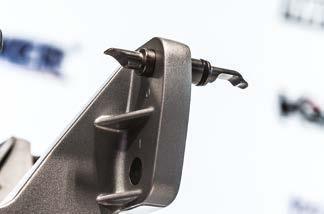
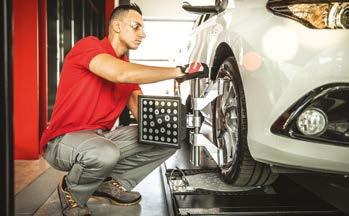
5. Aside from the pins mentioned already, check that all relevant parts are in good order and operate smoothly. These include the plastic ends of the hanging wheel clamp designs. An aligner from a quality supplier will hold a decent stock of spare parts. 8. If you are working with an incomplete, or out-ofdate database, avoid the 'that'll do approach'.
Never select a vehicle's specification that looks similar to the one on which you are working, because the data can vary dramatically for a different variant of the same car model. buckled wheels, can be overlooked during demonstrations, or even training sessions, resist skipping this operation, which can lead to inaccurate results. 6. Where battery packs are fitted in the heads, ensure that they are charged adequately before starting a procedure. Some PC-based aligners have battery diagnostic facilities, where you can set low-charge warnings. Yet, batteries do not last forever. If they cannot last for long between

full charges, replacements may be necessary.
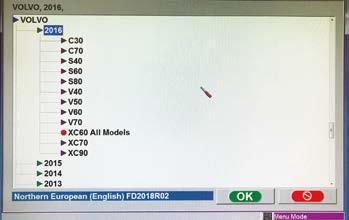
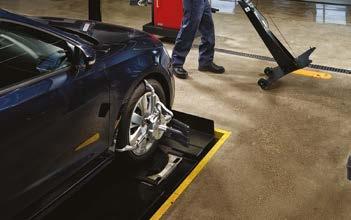
9. According to the GEA, most alignment equipment can check toe angles on a floor that is flat but not necessarily level. However, should you offer camber, caster and KPI angle checks and adjustments, the services must be provided
10. Prior to completing a wheel alignment check,
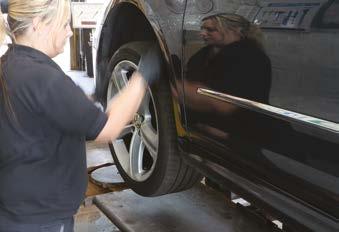

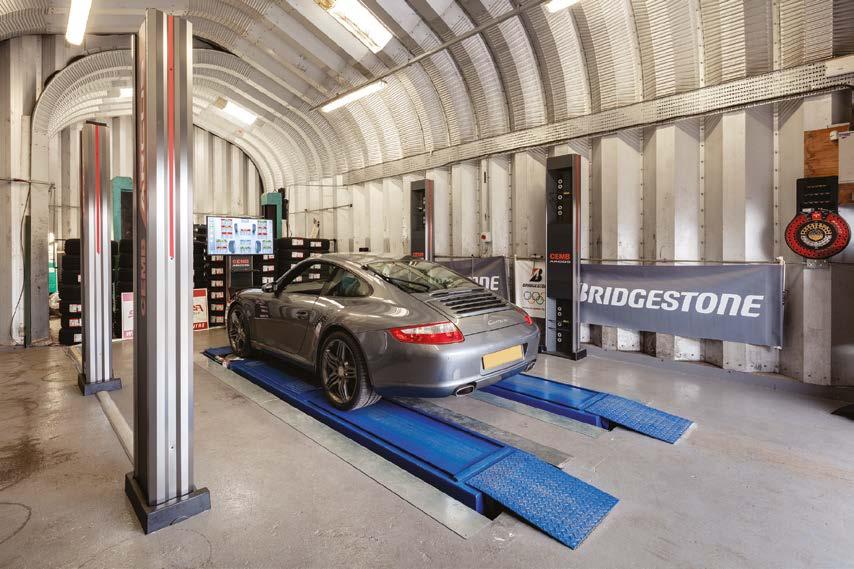
11. As run-out compensation, which checks for upon a level working area.

12. Run-out compensation takes extra time on a
CCD geometry aligner but, on 3D machines, the process is completed during a process called 'vehicle positioning', carried-out in a fraction of the time.

13. All OEMs recommend that the suspension is loaded, i.e all wheels support the vehicle's weight. Some of them have additional and more complex requirements, such as placing weights within the vehicle and even that the fuel tank is full. Do not ignore these instructions. of rocking the steering from side-to-side to measure the caster, because it is not adjustable on many cars. Yet, as caster can be the indication of bent suspension components, it is worth checking to see if further repairs are required to restore the correct geometry. lift provides not only a level surface but also possesses recesses for front turn-plates and rear sliding plates. The main advantage is that the vehicle’s suspension is not disturbed and, therefore, will not require to be settled in order for you to gain accurate readings quickly.
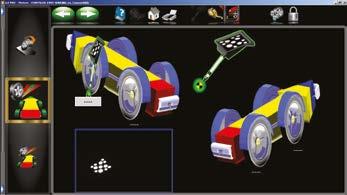
14. The methods and location of measuring ride height may vary dependent upon the type of vehicle and its company. A rule, or tape measure, can be used but note that positions, from which you take the measurements, vary between vehicles. think the job is complete, when the setting turns green on your screen. This is because the geometry may remain imbalanced, which could manifest itself as poor handling. to soak-up all the information from the trainer, so that you maximise the functions and profitability of your aligner. Think of extra training as an investment and part of a technician's development. John Bean's alignment course, as an example, is RMI accredited.

15. On some vehicles, the suspension must be put into wheel alignment mode to ensure a successful result. This can only be set via a diagnostic scan tool. A steering angle sensor reset, or ADAS calibration might also be
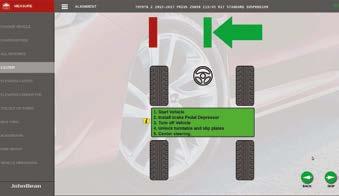
16. Many technicians skip the simple process

17. Take a closer look at the readings and do not required afterwards.

18. When checking the caster, the front wheels must not move. Lock the brake pedal with the pedal application device, not forgetting to have the engine running to take full advantage of the servo assistance function. PC aligners tend to warn you if the car moves, unlike laser

19. A good quality and well-installed alignment

20. Set aside time for you and your technicians types.
Making an enquiry?
Please mention you saw it in Autotechnician!
Case study:
Neil Hunt of Kilnhurst Tyre and Service Centre, Mexborough, South Yorkshire
The CEMB by Argos is a clamp-less alignment system, offered to the UK motor trade by Supertracker of Southampton, Hampshire
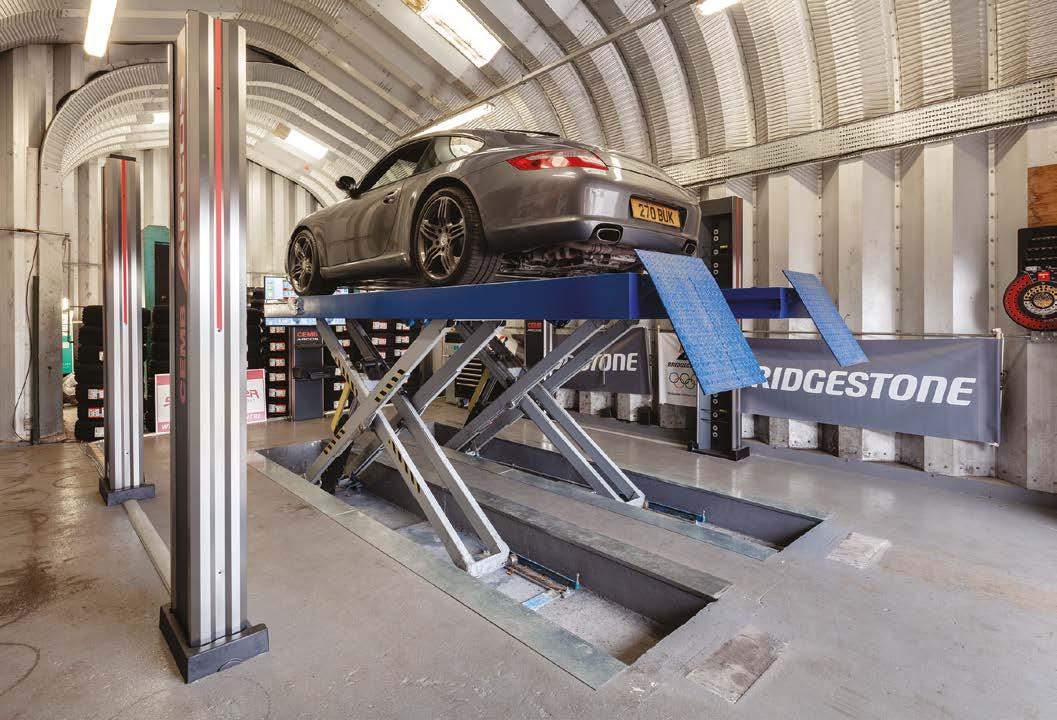
Any family-run independent that has survived beyond thirty years will know how that not only doing the job correctly, but also investment correlates with survival. Slap-dash workmanship and resting on one's laurels is simply not an option.
"Just over a year ago, we desired to offer our customers something different but, being a long-established business, we recognised the profit opportunities that suspension alignment offers. Logically, we focussed on expanding our services in that area," recalls Neil Hunt, tyre fitter, technician and director of Kilnhurt Tyres & Exhausts.
Committing a six-figure sum to a new wheel alignment system might seem insane to some onlookers, especially as quotations from the nearest competitor amounted to under half that sum. Yet, Neil had confidence in his decision, telling AT.
"It was a big step but a logical one. Purchased via Supertracker, we invested in a CEMB by Argos clamp-less alignment system to replace our previous Supertracker 2000, from which we had excellent service but the natural time had come to upgrade."
Speed is an obvious benefit, especially for a workshop that conducts between ten and twenty alignments daily. The technician does not need to fit wheel clamps, or even alight from the vehicle, thus negating any chance of set-up errors. The lasers identify the car automatically as it is driven onto the ramp, not by scanning the VRM, but using the chassis dimensions. All the technician has to do is confirm the selection.
"When you can shave between 20 and 30 minutes from each alignment operation, the cost savings become substantial," explains Neil. While he highlights that his new system achieved pay-back within six months of the installation date, speed was not the only advantage:
"The greater accuracy and flexibility also gave us the capacity to expand our client base. I can now cater for a greater number of specialist vehicles, including cars with lowered suspension. Additionally, where my old Supertracker would be accurate to the nearest millimetre, the CEMB by Argos measures to the nearest thousandth of a millimetre."
This greater precision has led to a surge in demand but not just from car enthusiasts. Not only have franchised dealers turned to Kilnhurst Tyre and Service Centre for help but also body shops and even emergency services appreciate the extra peace of mind, knowing that their vehicles are aligned with the utmost precision. Apart from benefitting driver safety, Neil concludes that his investment has reduced technician error, enhanced accuracy, grown his customer base and boosted profitability. In short, he concludes that "everyone's a winner".









